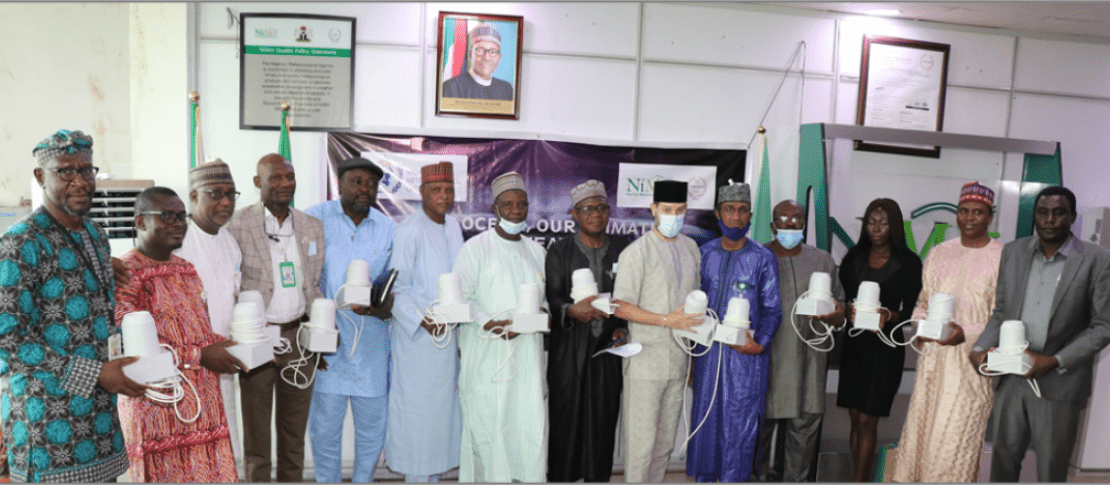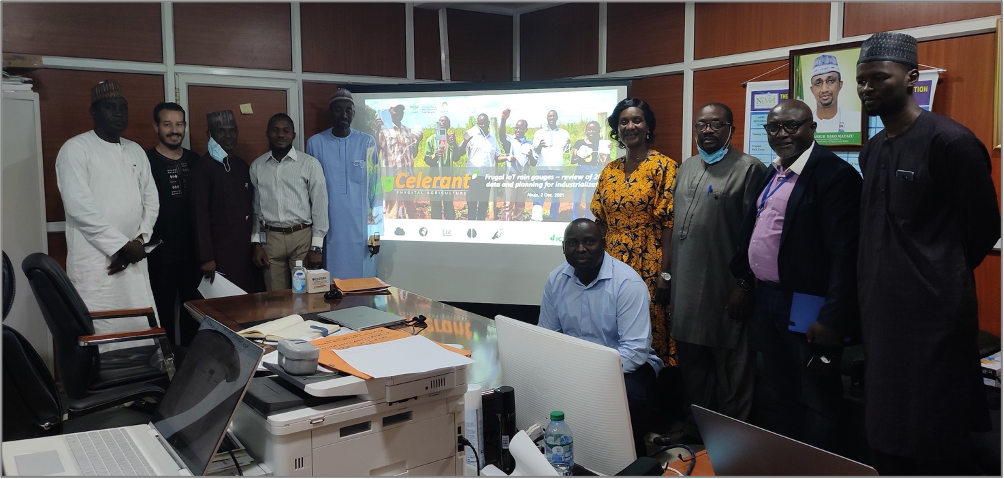Nigeria to industrialize frugal tech innovation

Variability in climate makes agriculture risky. In the tropics, this mostly relates to variability in rainfall. To address this, the World Meteorological Organization (WMO) recommends a minimum of 1 precipitation recording station per 5,750 km2. Nigeria, which is home to 220 million people, meets this recommendation with 176 functioning weather stations. Yet, with interest rates on smallholder loans as high as 23 percent and the default rate reaching up to 98 percent, it seems this current data infrastructure doesn’t help de-risk smallholder agriculture. Why is this?
First, there has been a lack of seeing the forest for the trees. Nigeria’s population is expected to almost double by 2050, with most of that growth occurring in cities. Ensuring there is enough food requires a significant increase in the use of agricultural inputs – especially nitrogen (N) fertiliser. Today, the country only uses an estimated 20kgN per hectare, compared to 100kg in Asia.
In order to increase nitrogen use, the very first input needed is credit. Reducing the role of observation networks to last-mile agro-advisory support should not hide their bigger systemic potential for de-risking investment and making credit affordable.
Helping farmers better manage climate risk with their (existing) limited resources is relatively less important and valuable than helping them access more affordable resources.
Farmers already manage climate risk pretty well and they know better than most how to optimize the management of their existing resource.
What producers need is more external resources. A more transformational change is required, to help farmers secure access to more and cheaper credit and other inputs to make the required doubling of yields possible.
Second, there is too often far too much focus on the technologies and innovations (e.g. measurement instrument and farm-level advisory) over the processes needed to realise their potential (e.g. industrialization of a frugal technology triggering a systemic reduction in the cost of credit).
Technology is usually not the limiting factor in food production – so why do companies interested in selling tech and digital information services spend so much time developing sophisticated technology which cannot scale, and so little time listening to the users?
Acknowledging the limitations of data that comes from global observation systems and climate models—specifically as a source of information for farm-level decision making— does not imply condoning the use of any kind of in-situ technology.
Too many fancy tractors have been abandoned in remote villages due to lack of spare parts or the means to purchase them. Likewise, too many automatic weather stations have been sitting unused in the countryside, victims of unmanageable maintenance costs and acts of vandalism.
It is high time that frugal tech and sophisticated engagement (via a public-private-engagement between African SMEs and public research institutes) should replace sophisticated tech and frugal engagement.
Finally, there is lingering mistrust between the public and private sectors. Let’s not forget that the establishment of one of Africa’s most lauded agro-meteorological success stories, Mali’s GTPAs (Groupes de Travail Pluridisciplinaires d’Appui au Monde Rural) was triggered almost 40 years ago by an innovative public-private partnership. That was when Mali’s National Hydrological and Meteorological Service and SIMPLAST S.A., a local plastic bucket company teamed up to produce the now widely disseminated, US$5 “farmer’s rain gauge” (pluviomètre paysan, or sanji sumanan in Bamanankan), which is the foundation upon which GTPAs operate, with spillover benefits in several countries.
Several countries in West Africa—including Nigeria and Senegal—have been using the SIMPLAST manual rain gauges. Several have also implemented the GTPA model, including Burkina Faso, Niger, Senegal and Chad.
Fortunately, with the Geneva Declaration of 2019, a profound cultural and behavioural change is ongoing at the World Meteorological Organization (WMO) with public-private engagement now a core ideology.
It is important that such an approach to public-private engagement trickles down to local practice, as no single partner can claim to meet the diversity of user needs alone.
These recent changes at WMO present an opportunity to promote similar mindset changes at regional, national and local levels. It is in that context that on December 2nd, the Nigerian Meteorological Agency (NiMET), the International Crops Research Institute for the Semi-Arid Tropics (ICRISAT), and Manobi Africa met to review initial outputs from the 2021 deployment of twenty agCelerant IoT rain gauges in the states of Bauchi, Kano, and Niger.
Results were judged to be promising, with 95-99% agreement between IoT rain gauges and co-located reference instruments, and with IoT rain gauges successfully capturing and streaming both the number of rainy days and daily rainfall amounts in various locations. The partners agreed to strengthen and formalize their collaboration through a larger 2022 pilot, including assembling several hundred such devices on site at NiMET headquarters at Abuja Nnamdi Azikiwe International Airport ahead of the 2022 agricultural season.
The partners also agreed to deploy a larger number of devices across the NiMET network, and to support the effort with refined start-of-season instrument commissioning and end-of-season decommissioning protocols, as well as monitoring and validation procedures that include the performance of energy supply (stock LR20 batteries with proven autonomy of over 8 months) and network signal.

agCelerant IoT rain gauges are designed for frugal operations without grid and solar power and can withstand ambient temperatures of up to 50°C and the photochemical oxidation that comes with high UV radiation. Their affordable cost should allow users (in this case national hydrological and meteorological services) to increase ground observation network density up to 50-fold, and Manobi Africa, NiMET and ICRISAT plan to produce 1,000 such devices in 2022.
These devices should reduce basis risk in weather index insurance which, in turn, should reduce insurance premiums. As insurance is usually bundled with credit, this could also result in a reduction in interest rates on loans. As credit becomes more affordable farmers can increase their use of agricultural inputs and produce more food. Additionally, the upfront cost of the IoT rain gauge is embedded in credit.
This holistic engagement process exploits the power of phygital value chain coordination platforms like agCelerant.
This approach also supports the concept of “one farmer, one loan, one rain gauge” by delivering hyper-local value to producers and financial service providers.
For more details: p.s.traore@cgiar.org / pierre.sibiry.traore@manobi.com
The development and production of IoT rain gauges prototypes reported here has been funded by the European Commission’s Horizon 2020 research and innovation program under grant agreement No 776309 (Nurturing Africa’s Digital Revolution for Agriculture – NADiRA) and supported by the CGIAR Research Program on Climate Change, Agriculture and Food Security (CCAFS) project on Capacitating African Stakeholders with Climate Advisories and Insurance Development (CASCAID). The innovations and partnerships highlighted in this blog were delivered under the ‘Building Livelihoods and Resilience to Climate Change in East and West Africa’ project. The project is kindly supported with a grant from the European Union, delivered via the International Fund for Agricultural Development (IFAD), under grant number 2000002575, implemented by Alliance Bioversity-CIAT with AR4D support from the European Commission for the year 2019. IoT rain gauges and other IoT sensors are deployed as integral components of agCelerant value chain orchestrators and data ecosystems.


